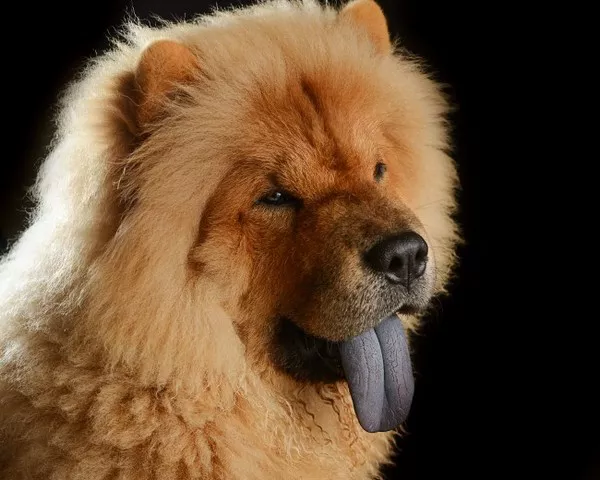The Chow Chow is a distinctive and enigmatic breed of dog known for its unique appearance and dignified demeanor. One of the most intriguing features of the Chow Chow is its blue-black tongue, which sets it apart from other dog breeds. This distinct characteristic has sparked curiosity and speculation among dog enthusiasts, veterinarians, and researchers alike. In this article, we will explore the fascinating phenomenon of the Chow Chow’s blue tongue, delving into its genetic origins, potential health implications, and the cultural significance it holds.
The Genetic Mystery
The origin of the Chow Chow’s blue tongue has long puzzled experts in the field of canine genetics. Unlike other traits such as coat color or ear shape, a blue-black tongue is a relatively rare occurrence in the animal kingdom. The question of how this unique trait became a defining characteristic of the Chow Chow has led researchers to delve into the breed’s genetic makeup.
Recent advances in genetic research have shed light on the origins of the blue tongue trait in Chow Chows. Studies have identified specific gene mutations associated with the development of a pigmented tongue. Researchers have found that the same genetic mutation responsible for the blue-black tongue is linked to certain coat colors, suggesting a connection between these traits. This intriguing genetic link raises further questions about the evolution and development of the Chow Chow breed.
Evolutionary Hypotheses
Understanding the evolution of the blue tongue trait in Chow Chows requires exploring the breed’s history and ancestral origins. Some theories propose that the blue tongue may have served as a form of camouflage for ancient Chow Chows, providing them with a survival advantage in their natural environment. This hypothesis suggests that the blue-black tongue could have helped the dogs blend in with their surroundings, aiding them in hunting and avoiding predators.
Another perspective suggests that the blue tongue could be a result of genetic drift. Over generations, random genetic mutations can accumulate within a population, leading to the development of unique traits. If the blue tongue trait emerged as a result of genetic drift, it could be a testament to the complex and unpredictable nature of evolution.
Health Considerations
While the blue tongue trait is undeniably a distinctive characteristic of the Chow Chow breed, it has also raised concerns among veterinarians and dog owners regarding potential health implications. Some individuals speculate that the blue tongue could be a sign of underlying health issues, such as dental problems or circulation issues. However, extensive research has shown that there is no direct link between the blue tongue and these health concerns.
Veterinary experts emphasize that a blue-black tongue is a harmless and natural variation within the breed. Chow Chows with blue tongues do not exhibit any higher incidence of health problems compared to their pink-tongued counterparts. It is essential for dog owners and breeders to be aware of these facts to ensure the well-being and proper care of their furry companions.
Cultural Significance
Beyond the realm of genetics and health, the blue tongue of the Chow Chow holds cultural significance in various societies. In ancient Chinese culture, the breed was regarded as a symbol of nobility and wealth. The blue tongue, along with the Chow Chow’s regal appearance, further elevated its status as a prestigious companion of emperors and aristocrats.
Additionally, the blue tongue has captured the imagination of artists and storytellers throughout history. It has inspired myths, legends, and artistic representations that celebrate the breed’s unique attribute. The cultural reverence for the Chow Chow’s blue tongue serves as a testament to the lasting impact that a distinctive physical trait can have on human perception and creativity.
Conclusion
The mystery behind the Chow Chow’s blue tongue has intrigued scientists, dog enthusiasts, and cultural observers for generations. Through advancements in genetic research, we have gained insights into the origins of this unique trait and its potential evolutionary significance. While the blue tongue has sparked debates about its health implications, it is crucial to acknowledge that it is a harmless and natural variation within the breed.
The Chow Chow’s blue tongue not only showcases the complexity of canine genetics but also highlights the enduring relationship between humans and dogs. As we continue to unravel the mysteries of this fascinating breed, we gain a deeper appreciation for the intricate tapestry of nature and the remarkable traits that make each dog breed truly one of a kind.
In a world where conformity often reigns, the Chow Chow and its enigmatic blue tongue remind us of the beauty and wonder that can emerge from the diversity of life forms that share our planet.


